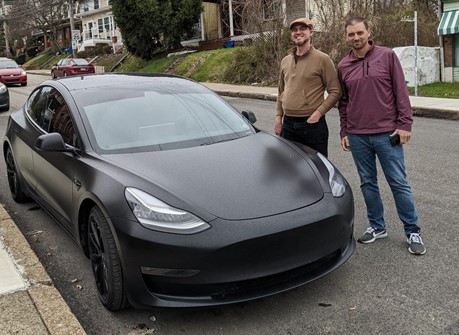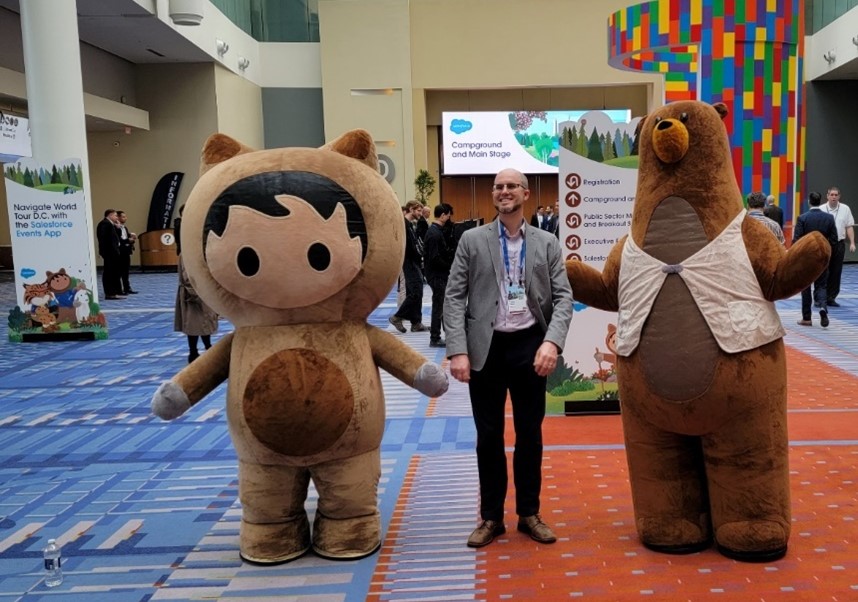Crunching the numbers to ensure a business trip is truly sustainable

Four months in, 2022 is shaping up to be the biggest year for sustainable business yet. The SEC has announced a new rule requiring companies to disclose emissions. Startups and software giants alike have launched so many launching greenhouse gas accounting products that analysts are talking about a “climate tech boom.”
So, it was no surprise that the agenda for the Washington, DC stop of Salesforce World Tour ’22 featured a standalone stage for sustainability – the Net Zero Theater.
We knew we had to go, but how to get there?
“Sustainable aviation has made great strides just isn’t a truly green option on the market yet.”
The default answer for business trips is to fly but although sustainable aviation has made great strides just isn’t a truly green option on the market yet. The most sustainable airplane trip remains the one you don’t take. Our office in Pittsburgh isn’t that far from DC – 240 miles.
Looks like time for a road trip!
Business travel is a classic example of Scope 3 emissions. We already avoided 6 tons of CO2 emissions by opting not to fly – could we reduce them even further?

We were excited last year when Hertz rental car announced that they would be purchasing 100,000 Tesla Model 3s, but we were disappointed to find that they were not yet available.
Luckily, we found one locally through Turo.com!
We knew that by going electric, we would be able to effectively reduce the emissions associated with this trip to near zero.
This was a clear sustainability win, but this is a business trip, right?
Making sustainability good business
By switching from flight to driving we reduced our expenses from $567 to just under $400.
If we had driven one of our personal cars, we would have built the company the standard federal mileage imbursement rate of 58.5 cents per mile. Add in tolls and the total trip cost comes to $ 336.80. At 19.37 lb of CO2 per mile, the trip would have put .24 tons of CO2 into the air.
Once taxes, fees, and tolls are added to the base rate of renting the Tesla, the EV trip comes in at just under $370.
You might be thinking “Wait a minute, that’s a $30 difference! And while that might seem a small price for the cost of going green, $30 is still $30.”

But what if the EV was owned by an employee?
The mileage reimbursement would be the same, but the fuel costs would be lower. The average price of gas in the US is over $4 a gallon, which brings estimated fuel costs for one of our sedans to $62. Based on information we received from the car owner we estimate the cost of the electricity at the Tesla superchargers to be $37. Not only, that wear-and-tear is lower for electric vehicles because they have less moving parts that can break down.
On the whole the EV is a far better deal from a total cost perspective.
Now, imagine that the EV making this road trip is not an employee car but a vehicle in your company fleet. You don’t need to be an accountant to realize that the reduced fuel costs and reduced wear and tear make for a compelling business case for electrification beyond emissions reduction.

Let’s not forget about the intangibles either. We were driving to a sustainability conference! It was an absolutely killer networking opener to tell attendee fellow attendees that we had arrived in a Tesla.
One of the activities at the Net Zero Theater was to calculate was to offset your emissions through tree planting. We got to tell the Salesforce employee manning the booth that we had already made our trip carbon neutral. (They let us keep the button, anyway).
This is an example of the complexity that underlies even simple seeming sustainable business decisions. Is your organization making sustainability good business too?